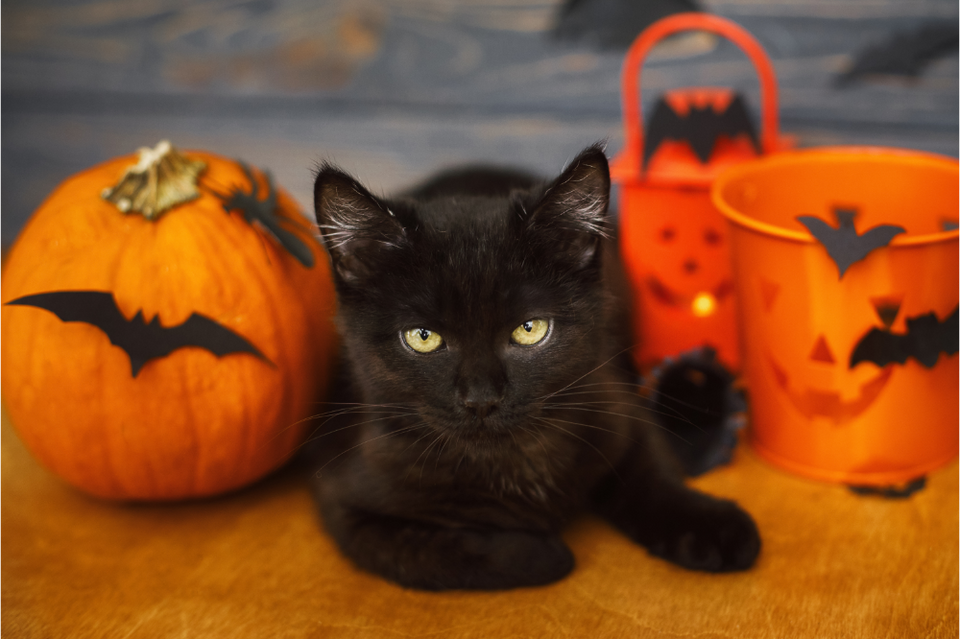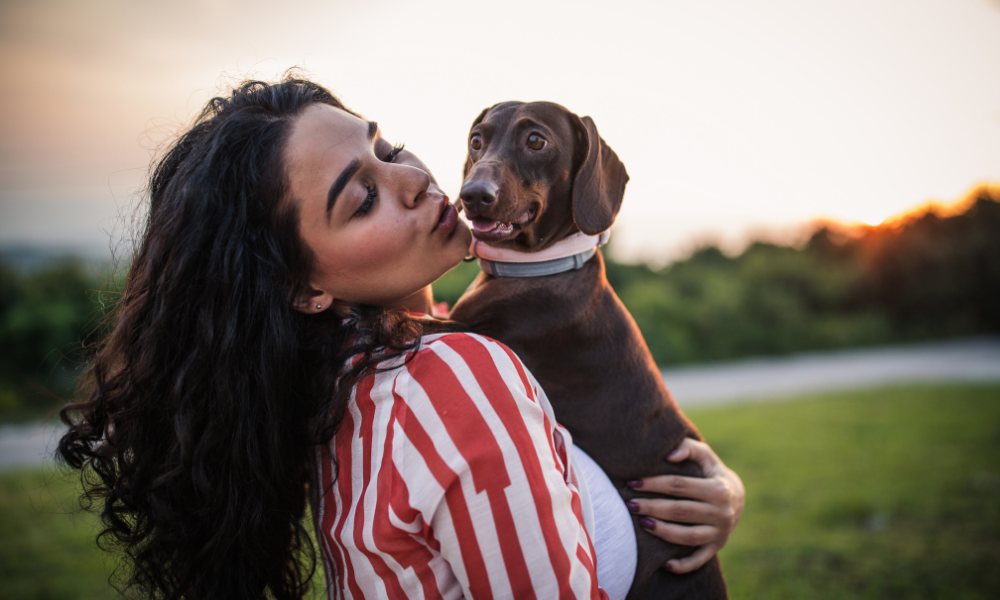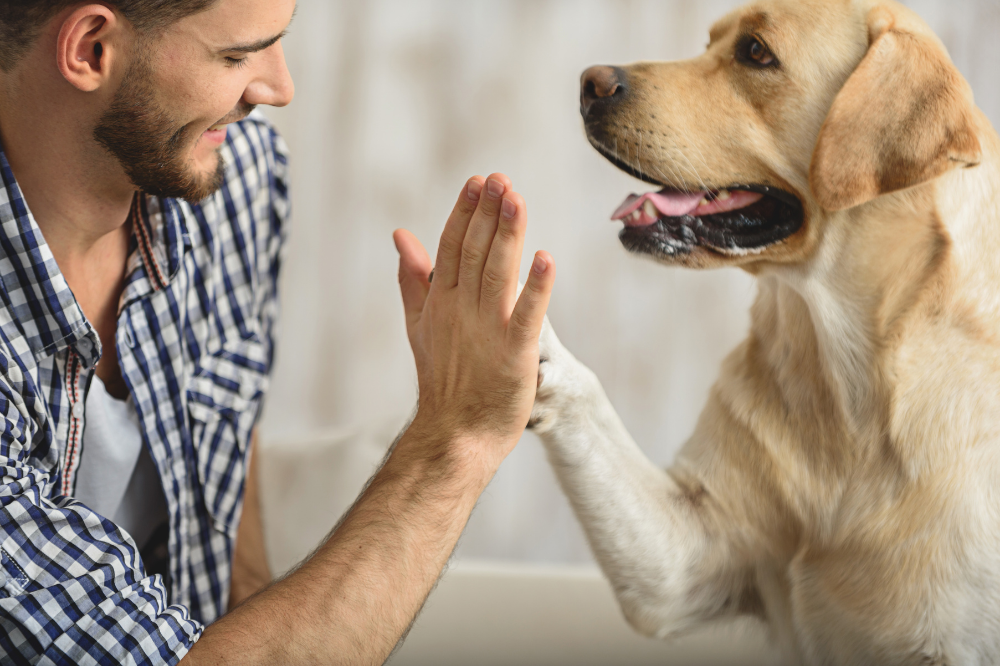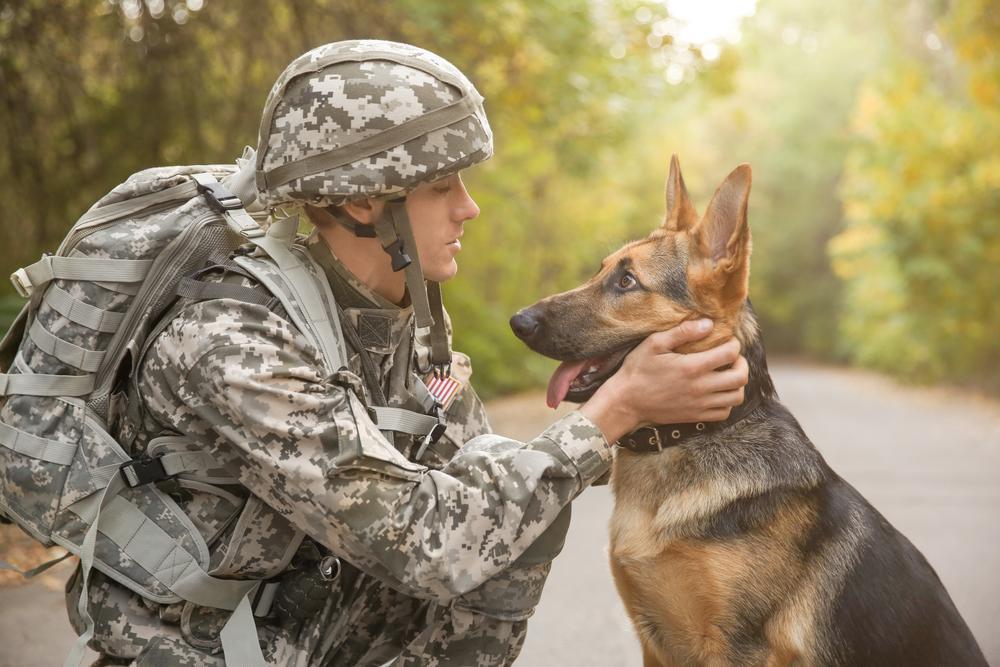
The Thing About Cats

October 27 is National Black Cat Day, appropriately timed to be close to Halloween, which is associated with black cats, among other things. But why black cats? Why Halloween, and why are they associated with witches?
For that matter, what about cats in general and their long history with humans?
Domestic Matters
Humans first domesticated dogs between 18 and 32,000 years ago, but cats weren’t far behind, although they didn’t join the human family until around the time that humans were settling into cities and developing agriculture 10 to 12,000 years ago.
It makes sense if you think about it, though. Cities brought farming and farming brought grain, which needed to be stored in silos. Storing grain in silos attracted rats — which have been humanity’s mostly undomesticated companion since forever — and rats attracted cats, who knew sources of easy free meals when they saw one.
They began to travel with humans, with evidence of cats living on the island of Cyprus around 9,500 years ago. Since they were not native to the island, they must have been brought over by humans, because they sure didn’t swim.
Cats were sacred in ancient Egypt and once Egypt became a province of the Roman Empire, cats spread to Rome itself and beyond, becoming common companions across the Empire.
Still, being cats, it turns out that they actually domesticated themselves after a fashion, with the DNA of wild cats and “domestic” cats varying little for centuries, not showing a change until the emergence of “tabby cat” markings in the Middle Ages.
There are a few things you may not have known about cats. Now here come some that, well, if you’re a cat parent, then you know. If not, prepare to learn.
If You Know, You Know

Cats and dogs can be very, very different as exemplified by the old joke, “If you call a dog, it’ll come. If you call a cat, it’ll take a message.”
Cats are generally not as sociable and cuddly as dogs, but they have their moments — like when you’re sitting in the bathroom and they decide that your underwear around your ankles is the best hammock ever, or you’re working on your computer and your keyboard or laptop is suddenly the ideal place to take a nap.
In some ways cats can be like human children. Have you ever bought that big, expensive present for your kids on their birthday or for the holidays only to have them ignore it and play in the box? Well, for cats, that goes times infinity. No matter how many fancy toys you bring home, that paper bag or box is suddenly going to become the most fascinating thing in the world. You might has well have built them a kitty mansion.
Got feet? Good. Better keep them tucked under the covers, because cats have a weird ability to forget that they’re attached to you, so if some toes slip out at night, expect them to be attacked as prey around three in the morning.
This one almost seems like they set a reminder on their cat calendar for it, but at a certain time of the day, your cat will decide that anything that’s sitting on a high shelf, or a not-so-high shelf, or a desk, or any other flat surface that it can be knocked off of gets knocked off.
This is why, if you have a cat and you want to have nice things, you screw those pictures and tschotskes down, never leave anything breakable near the edge of a desk or table, and definitely invest in a cat tree and leave toys and the like on the edges of its upper steps. Hey, cats gotta knock. Let them push their own stuff over the edge.
Another regularly scheduled behavior is the sudden “house dash,” in which your cat will run from one room to another and back again, over and over and over, in pursuit of... something? Consider yourself lucky if this tends to happen around sunrise or sunset, but more likely than not it’ll happen in the wee hours, with your bed being sort of a home base in the transit process.
Speaking of beds, no matter how small your cat is, if they share the bed, they have a magic ability while sleeping to expand to the size of an adult human and take up as much space. That, or they’ll discover that they really like sleeping with their butt up against your chin, wagging their tail across your nose.
Finally, cats act as your customs and border control agents, and absolutely must inspect every new thing brough into the house, whether it’s a bag of groceries, the dry cleaning, a piece of furniture, a human visitor, or the coat they just hung in the hallway.
What? It’s their job to protect you. Just accept it!
A Tale Of Ale

We mentioned previously that black cats are associated with witches, and there’s an interesting story behind it although in reality cats were just part of the combination that turned what were a group of innocuous objects — the cat, a broomstick, a cauldron, and a tall, pointed hat — into the image of the witch that has persisted in English-speaking countries since the 16th century.
But it all began with women brewing ale. Since it was akin to cooking, it was a more acceptable profession, and in fact gave us the common surname Brewster, which was the feminine form of Brewer.
Of course, at the time, it was far more common for men to still make the bread — hence Baker, although the female version was Baxter. But women during the late Renaissance were allowed to brew ale in their homes and, indeed, it was kind of a necessity, because so much of the water around cities was far too dangerous to drink due to bacteria or worse. In effect, these women, known as alewives, disinfected that water by turning it into a beverage with a low but significant alcohol content.
A woman could substantially supplement her household income by brewing ale and selling the excess in the city, and many widows supported themselves via the practice.
Now, there were four things that alewives typically had. Well, five if you want to generalize attributes. The first was the broomstick, basically a wooden rod with long straw bound around the end of it. This would be mounted above the door to the house to indicate that the Brewster was at work. Second would be the cauldron, in which a large part of the prep work for the brewing would take place — yeast, hops, water, time, and stirring.
Third was the cat, an absolute necessity because of the hops in the brew. The cat’s job was to protect this important commodity — and their human — from rats.
Finally, when the alewife went out to sell her wares in the city, she wore a tall, dark, peaked cap for one simple reason: It literally made her stand out from the crowd so that she would become a moving billboard for her wares, making it easy for people to find her.
The optional aspect is the typical image of a witch as looking like a very old lady with wrinkled skin, a sunken mouth, and possibly moles. This may or may not have typified an alewife of the era, but given that a lot of them were widows and people did tend to live into their 60s or 70s if they made it into adulthood. However, they didn’t have the best dental hygiene, plus may have spent a lot of time in the sun, so it’s more likely than not that a lot of alewives did have the “witchy” look.
So anyone at the time seeing an older women in a peaked cap coming out of a house with a cauldron over a fire, a broomstick above the door, and a cat, probably black, lurking around, would immediately think, “Right. Better buy something to drink that won’t kill the whole family.”
Why did this change? First, because of the rise of the guild system, which you probably heard raved about as the thing that saved Europe from feudalism if you ever took a history class covering the birth of modern Europe. Second, because men realized that there was money to be made in brewing, and it could be done even more cheaply by leaving out the hops and making beer.
So brewing guilds formed, but women were excluded entirely. And then things got nasty, and in order to eliminate any competition, the guilds began to slander the alewives, turning the symbols of their trade into symbols of evil and witchcraft.
Thus was the stereotypical image of the “witch” created, and the black cat forever cemented in the public imagination as her familiar and companion. All because women had gotten really good at doing a thing that made them independently wealthy.
Not The Only Superstition
Of course, when it comes to cats, England and Western Europe do not have a monopoly on superstitions about them, good and bad. Since cats live everywhere that humans do, there are as many superstitions as there are cultures. Here are a few.
Multiple Lives
One of the most well-known is that cats have nine lives, largely based on their ability to fall from great heights and live, but there are two things you might not know about this.
First is that some studies indicate that falls of around seven stories can actually be fatal to cats, while others have survived falls of up to 32 stories. Of course, this doesn’t mean that they weren’t injured. Just that they weren’t killed.
The theory on the shorter falls being fatal has to do with how cats orient themselves to land on their feet. Basically, they have a righting instinct, which works like this. When they fall, the vestibular system in their head — akin to a human’s inner ear and responsible for balance — lets the cat know which way is up and which is down.
The cat’s head will pretty much immediately snap to the upright orientation, and then its spine and body will twist to align so that it’s four paws down by the time it hits the ground.
Second is that not all cats have nine lives. It depends upon where you grew up. In Spanish speaking countries, cats only have seven lives, but that’s probably more related to seven being a mystic number.
Black cats
You may have heard that black cats are always bad luck, but that’s not necessarily the case among every group and culture. In Japan, they are considered to be good luck, especially for single women because the cats will attract many suitors.
If you’re a European sailor, having a black cat on board was assumed to keep the ship and its crew safe from dangers at sea, and the families of sailors often kept a black cat at home as well. Of course, those cats also helped rid the ships of rats, so that was a bonus.
In Scotland, if a black cat appears in your doorway, it means imminent prosperity, and in France black cats actually bring you luck if you take care of them.
You’ve probably heard that a black cat crossing your path is bad luck, too, but it varies by culture and can depend on the direction that the cat crosses. In Ireland, Britain, and Germany, if the cat crosses left to right, then it’s good luck. And if you’re a pirate, a black cat walking toward you is a good omen, but if it walks away from you, that’s bad.
If you find a single white hair on a black cat and can pluck it without getting scratched, though, then you’ll have good luck.
You lookin’ at me?
Probably because of their association with witches and fae folk, in many places it is considered a really bad idea to look into a cat’s eyes. At the very least, it can bring bad luck. At worst, the cat’s eyes are a portal into a mystical world, and people who get sucked into mystical worlds rarely return.
Just ask anyone who’s ever encountered a púca, which is the Irish name for a creature from Celtic folklore that can take many forms, including that of a cat. In the guise of a horse, it’s fond of luring humans onto its back and taking them on wild rides all over the countryside until finally dumping them where they started from. The protection against this is wearing a set of sharp spurs.
In cat form, you won’t get a wild ride, but púcaí in cat form still have the power of speech, so you may still get advice — good or bad, depending on the púca’s mood.
Smörgåsbord

There are many other cat superstitions, but here are a few of the most interesting:
China: Black cats are seen as an omen of hunger and poverty. However, they can also see ghosts and protect people from evil spirits.
Britain: Cats have a lot to do with the weather. If a cat claws at the curtains, it’s going to be a windy day. If a cat’s pupils are dilated or it washes behind its ears, expect rain. A cat sleeping with all four paws tucked underneath itself means cold weather is coming.
Europe: A cat can bring the dead back to life, and if a cat jumps across a person’s grave, that person will come back as a vampire. In Romania, the cat doesn’t have to wait for the burial. It only has to jump across the corpse.
Iceland: Beware the Yule Cat, or Jólakötturinn, which prowls the countryside around Christmas, and eats anyone who hasn’t received new clothes by Christmas Day. This came about because children who finished their chores before Christmas would get new clothes as a reward, so by implication, the ones without new clothes were lazy and would be punished. Happy holidays!
Indonesia: When they want rain, they pour water on a cat. This really angers that cat, who makes it rain in revenge. Obviously.
Ireland: Cats born in May, especially May 1, will turn out to be ill-behaved and troublesome, and may even bring snakes into the house — even though Ireland never had any snakes in the first place and still doesn’t. But don’t kill that troublesome cat, because it will bring seventeen years of bad luck.
Myanmar and Thailand: A cat’s body is the resting place for the soul of a very spiritual person, who will remain there until the cat dies, allowing the deceased human to ascend to paradise.
The Netherlands: Be careful what you say around cats, which are considered to be terrible gossips, and so are always locked out of rooms where important family discussions are taking place.
Famous Cats, Real and Imagined
No story about cat things would be complete without a look at some famous cats, real, fictional, and viral. Here are some of the better-known ones.
Unsinkable Sam: You probably haven’t heard of this luckiest of cats, but Sam, also known as Oscar (or Oskar) was a tuxedo cat originally resident on a German battleship, the Bismarck, during World War II. The cat was rescued by the HMS Cossack, a British ship, which itself sank after a few months when it was torpedoed. Once again, Sam survived and was taken on board the HMS Ark Royal, which also sank. He was retrieved from a floating plank and brought to live out his days on dry land, surviving until 1955.
Garfield: Arguably the most famous cartoon cat of all time (sorry, Felix and Sylvester!) Garfield sits at the center of a huge merchandising empire. The strip started in one local Indiana paper in 1976, originally called Jon after its main human character, but it went into syndication in 1978, which was also when the name changed. As of 2020, Garfield merchandise was still pulling in an estimated $750 million to $1 billion dollars per year. Just don’t ask about all those mysterious Garfield telephones that keep washing up on shore in France.
Larry, the Chief Mouser: The British Prime Minister’s residence has had a feline Chief Mouser on staff ever since 1515, long before Number 10 Downing Street became its current and most famous address in 1735. Since February 2011, Larry has been the latest in a long line of official Chief Mousers, although he didn’t immediately take to his duties and actually had to be trained by staff to hunt mice.
Creme Puff: She was a simple domestic cat living with her human in Austin Texas, but she holds a pretty big world record. When she passed away in 2005, it was just three days after her 38th birthday, making her the oldest house cat ever recorded. Her human, Jake Perry, must have been doing something right because his other cat, Granpa Rexs Allen, lived to be 34 years and two months old, placing him fifth on the list of longest-living cats.
Tardar Sauce: You probably don’t recognize her real name, but the second you hear her famous internet name, her face will probably come immediately to mind: Grumpy Cat. Her career began very early in life in 2012, when she was not quite six months old, and her seemingly perpetually frowning face became a meme sensation. She eventually wound up with 2.6 million followers on Instagram and 1.5 million on Twitter. She passed away in 2019 at only seven years old.
The Cheshire Cat: The exact opposite of Grumpy Cat, since this fictional feline can never not grin, its origin actually predates its most well-known appearance in Lewis Carroll’s Alice’s Adventures in Wonderland in 1865. The expression “To grin like a Cheshire Cat” was already in circulation, and at one point in time, cheese made in Cheshire was pressed into molds with the face of a smiling cat. Carroll’s version, though, has a habit of fading away until only the grin remains, although the cat’s best trick — and proof that it has nine lives, too — is to make its body vanish with only the head remaining so that the Red Queen’s order of “off with his head!” cannot be logically carried out. Smart cat.
This is only a small sampling of the list of famous cats, real, imagined, and memed, but there are many, many more to read about because the world loves cats, apparently.
Final Cat Facts

This has practically turned into an encyclopedia, but if you want more cat facts they’re available. Well, sort of.
“Cat Facts” started out in 2012 as a prank that a reddit user played on her cousin, who had posted to Facebook that he was bored, along with his personal phone number. She proceeded to send him text messages thanking him for subscribing to Cat Facts (which didn’t exist), and then giving increasingly difficult instructions for cancelling.
Of course, it didn’t matter whenever he tried to cancel, because the response would come back, “Command not recognized,” and the frequency of cat facts would then increase, not to mention that a new cat fact would come in response to any text from the victim.
It probably drove him around the bend, and it’s a gag that people have pulled off countless times over the years. However, there’s now a Cat Facts App which you can use to amuse or annoy your friends. And, face it, you can never have too many cat facts, can you?
While our canine companions are fascinating in their own right, if you paws for a moment and reflect, you’ll see that our feline friends are, categorically, in a class of their own, and true cat lovers will doggedly defend that claim.
Share this article
written by


